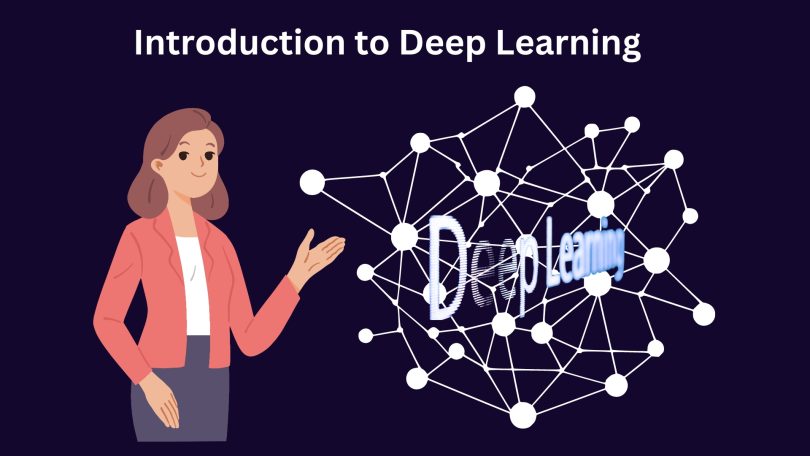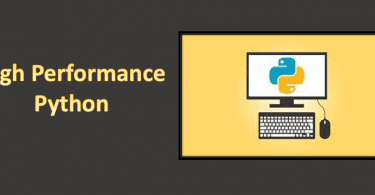It is a branch of ML that utilizes neural networks known as deep neural networks to replicate complex decision-making processes similar to those of the our brain. This is the kind of technology that supports many of today’s AI applications.
Mechanisms of Deep Learning
Neural networks are made up of layers of nodes which are analogous to neurons of the human brain and nodes within the same layer are connected to nodes within the next layer. The term “deep” quantifies how many of these related layers exist. A single neuron in the human brain is connected to tens of thousands of other neurons; likewise, the signal flows between the nodes in an artificial neural network with the weights.
The W values, the weights assigned to the subsequent layers are represented by the larger figures to demonstrate the higher impact on them. The last layer sums up the weighted inputs to produce an output. Deep learning systems require reliable hardware because they involve pre-processing of data and high computational operations. It takes quite a long time to train a neural network even with the help of sophisticated hardware, it can take from several weeks and even more.
This data is introduced as large datasets as artificial neural networks can help categorize information based on the answers that are obtained from the set of true/false questions involving several mathematical operations.
For instance, a facial recognition program learns basic things about edges and lines of faces, then more complex features and the general representation of faces. In the process, the system also learns, and becomes more accurate in detecting faces.
Importance of Deep Learning
Deep learning has become one of the key components of the modern technological environment, that provides incredibly high levels of performance for analyzing large and complex data.
Handling Complex Data: It is particularly useful in handling and extracting insights from large volumes and large and small data that have no specific format such as images, videos and text among others. It has the capability of extracting features from such data without actually having to program it, which makes it very useful for various applications.
Improved Accuracy: With the advancement in availability of data, deep learning algorithms improve their precision and speed to that of humans and in some cases surpass that of humans in areas like image and speech recognition. This is especially important in high-precision use cases like disease detection and self-driving cars.
Automation and Efficiency: Deep learning (DL) enables great automation in different fields of activity. It can identify machinery breakdowns in production lines or control stocks through big data analysis in merchandising. This automates the process hence resulting to cost reduction, increase in efficiency and thus better performance.
Personalization: DL is used in the consumer applications such as streaming, shopping and social networking where consumers are offered customized services. It allows for the specification of content based on user behavior/tastes hence increases the chances of the users engaging with the content which in turn increases their satisfaction levels.
Innovation in Products and Services: Various new generation products and services are based on DL.
It makes real-time translation possible and voice control, which dramatically changes the ways of people’s interactions with devices and services.
Scalability: It is possible to scale deep learning models to handle big data and fast-growing amounts and rates of information, which is crucial for the big data usage.
Advancements in Science and Research: In genomics and drug discovery, this is beneficial to break down complicated biological data into relevant segments; also, facilitate the enhancement of research and development, and in some cases, lead to the discovery of new treatments and diseases.
Enhanced Security: DL improves the security measures and their frameworks to avoid threats and risks. In cybersecurity, it is used for detecting outliers while in physical security it is used for facial recognition.
Economic Impact: Through improving the economy’s productivity, cutting its expense, and encouraging the development of novel goods and services, DL highly contributes to the economy’s growth. It helps businesses to create new products and markets resulting in fostering economic growth.
Addressing Global Challenges: It is used in the observation of such changes within the environment, forecasting the climate as well as the regulation of traffic systems in a bid to minimize on the occurrence of traffic jams and pollution. Therefore has a critical role to address some of the world’s biggest problems.
Applications of Deep Learning
Deep learning’s capacity to analyze and learn from large data volumes has led to its widespread application across various fields and industries:
Image Recognition: Image recognition is one of the major strengths of deep learning algorithms and is applied in diagnosing medical images, self-driving cars and among others.
Natural Language Processing: Translation services, speech recognition systems and chatbots make use of deep learning method to accurately interpret and produce human language.
Autonomous Vehicles: Self-driving cars are controlled by computer vision systems and deep learning to recognize objects, navigate and avoid the obstacles.
Facial Recognition: Security systems and smartphones utilize deep learning techniques to effectively recognize people from images and videos.
Healthcare: It is evident that DL transforms the health sector by detecting diseases from X-rays and MRI scans, and isolating the likely patient results and the right treatment for him or her.
Finance: Employed in algorithmic trading, credit risk assessment, customer service, anti-fraud and more in the financial industry.
Recommendation Systems: Some examples of deep learning applied in real life are Netflix, YouTube, and Spotify to recommend movies, videos, or songs that a user would like.
Agriculture: DL helps in diagnosing diseases in plants, pests and lack of nutrients; and also in controlling the sowing and harvesting process.
Gaming: It improves game spaces and NPC interactions to make them possible to change based on the player’s actions.
Manufacturing: Predictive maintenance, quality control and supply chain management are part of deep learning in the manufacturing sector.
Voice Assistants: Siri, Alexa and Google Assistant are examples of deep learning that helps them understand the language and respond or act accordingly.
Drug Discovery: Deep learning accelerates the process of finding new compounds and estimating their potential efficiency, consequently reducing the time and expenses required for the drug development.
Conclusion
Deep learning has emerged as the cornerstone of data processing and has contributed to the development of various fields ranging from healthcare to finance. Due to this, it has become a powerful tool in business and research due to its efficiency in identifying intricate patterns and making accurate forecasts. With the advancement of technology, there is much more to look forward to in this technology.




Leave a Comment